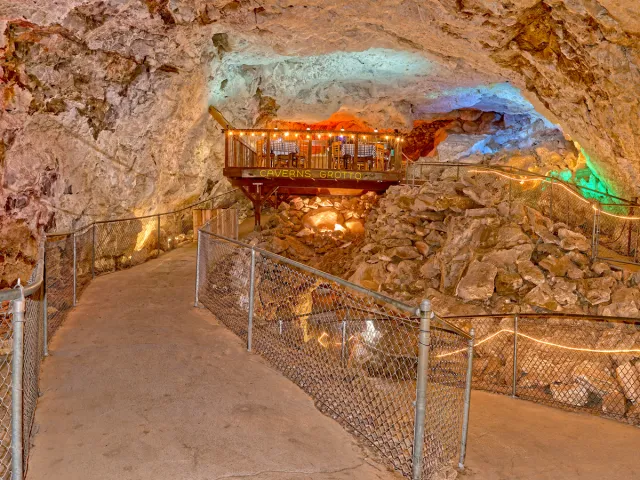If you’re an architecture fan, you probably gravitate toward bold buildings that make a statement. From the fantastical landmarks that look like UFOs to towers covered with 24-karat gold, these seven unique buildings from coast to coast reflect the diversity of American architecture and stand out in the best way possible.
Theme Building – Los Angeles, California
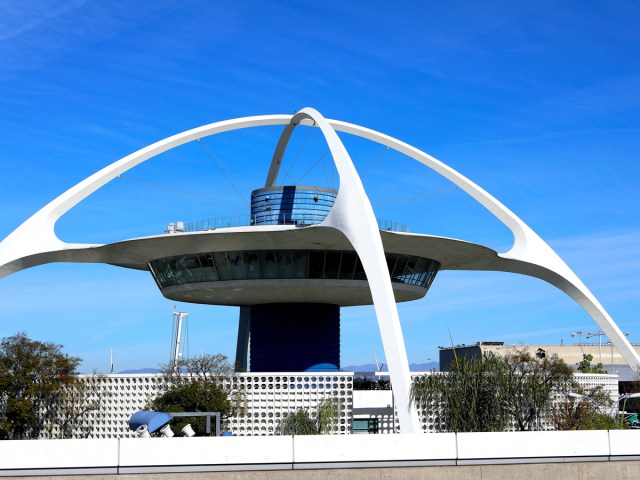
One of L.A.’s most recognizable architectural landmarks, the Theme Building at LAX Airport is playful and futuristic, a symbol of the Space Age during which it was built. Many liken its appearance to a giant UFO or spider. The structure, completed in 1961, consists of two 135-foot intersecting parabolic arches supporting a round, glass-walled restaurant and a rooftop observation deck that offers a 360-degree view of the airport and the City of Angels in the distance.
The Theme Building is an exuberant example of Googie architecture, designed by the midcentury architectural firm Pereira and Luckman, which also did work for NASA. While the restaurant and observation deck are sadly closed for the time being, the airport’s new Automated People Mover train (scheduled to open in 2026) will bring travelers within a stone’s throw of the building. And while ideas were floated a while back for the iconic building to become a hotel, nothing yet has been finalized, and so the Theme Building’s future remains uncertain.
Parthenon of Nashville – Nashville, Tennessee
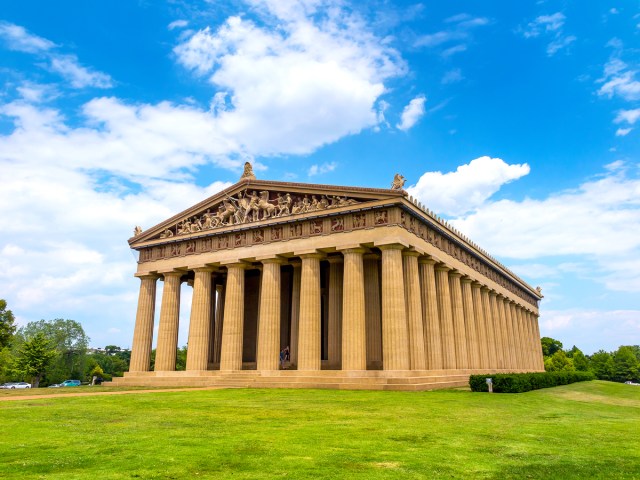
More than 2,000 years after the original Parthenon was built in Athens, Greece, the city of Nashville capitalized on its “Athens of the South” nickname (a nod to its commitment to higher education) and commissioned a replica of the iconic monument for Tennessee’s 1897 centennial statehood celebration.
Designed to mimic every last detail of the original — right down to the 42-foot statue of Athena — the structure was supposed to last for only six months. But by the time the centennial ended, locals were understandably reluctant to part ways with the classical glow it lent their city. The structure was saved from the wrecking ball to become the permanent centerpiece of Centennial Park.
While the original building took two years to build, the subsequent construction project to make it permanent — which involved replacing the deteriorating temporary materials with more permanent stone — lasted more than a decade. Today it houses an art museum and stands as a proud symbol of the city, and it’s the world’s only full-scale replica of the ancient Greek temple.
The Edge Observation Deck – New York, New York
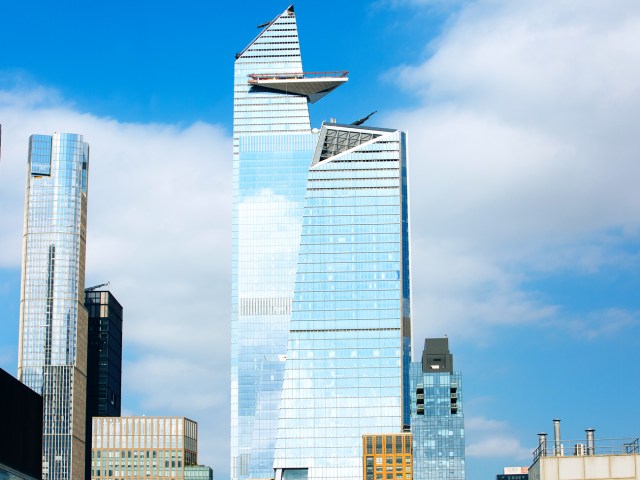
Manhattan has no shortage of sky-high observation decks offering epic views of its famous skyline, but one of the newest additions to that list can claim a title no other viewing platform in the city can. Opened in 2020, the Edge is the tallest outdoor sky deck in the Western Hemisphere — hovering 1,131 feet above Manhattan’s glitzy new Hudson Yards development on the city’s West Side.
That’s not the only reason to hop on the 60-second elevator ride up to the 100th floor, though. The observation deck — as its name suggests — edges out over Manhattan, extending about 80 feet from the skyscraper and creating the illusion of being suspended in midair. At its center is a triangular glass floor where the brave at heart can peer more than a thousand feet under their feet to the city streets below. If you don’t count yourself among them, head inside to the Champagne bar and enjoy a glass with gorgeous sunset views over the Hudson River.
Milwaukee Art Museum – Milwaukee, Wisconsin
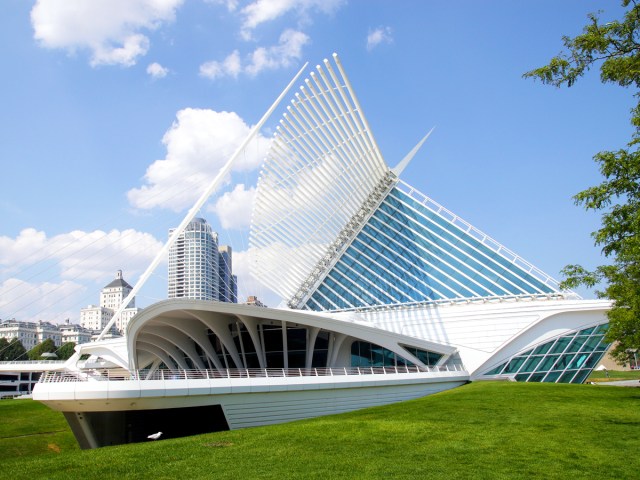
Its collection is estimable — think 32,000-plus works spanning millennia and genres, with notable concentrations in everything from the Haitian Centre d’Art School to the American Ashcan School — but the Milwaukee Art Museum is also the kind of place you could easily visit for the architecture alone.
A trifecta of modern masters is represented here, placing the complex squarely on the world stage: There’s Eero Saarinen’s 1957 modernist cross-shaped War Memorial Center, David Kahler’s 1957 Brutalist addition, and Santiago Calatrava’s 2001 neo-Futurist Quadracci Pavilion (often simply referred to as “the Calatrava”).
The latter is the most iconic of the three — so famous, in fact, that it’s become a visual stand-in for Milwaukee itself. No visit to the city is complete without experiencing the pavilion’s cathedral-evoking Windhover Hall, the giant avian-like Burke Brise Soleil (a moveable, 217-foot wing-like sunscreen that more or less flaps twice daily) and the pedestrian Reiman Bridge that connects the lakeshore museum to downtown.
Frank Lloyd Wright’s Fallingwater – Pennsylvania

Some have called Fallingwater the world’s most beautiful house; others, the most famous modernist residence. Whatever your superlative of choice, there’s no disputing that Fallingwater represents a pivotal moment in Frank Lloyd Wright’s career — a masterpiece of organic architecture that thrust him back on the world stage after he’d largely been sidelined by the Great Depression, among other factors.
The project was born when a young design enthusiast named Edgar Kaufmann jr. did a stint at the Taliesin Fellowship, Frank Lloyd Wright’s private architecture school in Arizona, in the early 1930s. When Kaufmann jr.’s parents — the prominent Pittsburghers Edgar and Liliane Kaufmann — visited him at Wright’s fabled estate, a meeting of the minds and a commission soon ensued. The Kauffmans asked Wright to design their family weekend house in Pennsylvania’s lush Laurel Highlands.
There, instead of letting the residents simply gaze upon their favorite waterfall, Wright basically built it into the house, mirroring the pattern of the surrounding rock ledges with cantilevered concrete “trays” that stacked above the falls. Lucky for a public that couldn’t get enough of the place, it became a museum in 1964 and has been a hit ever since.
Gateway Arch – St. Louis, Missouri
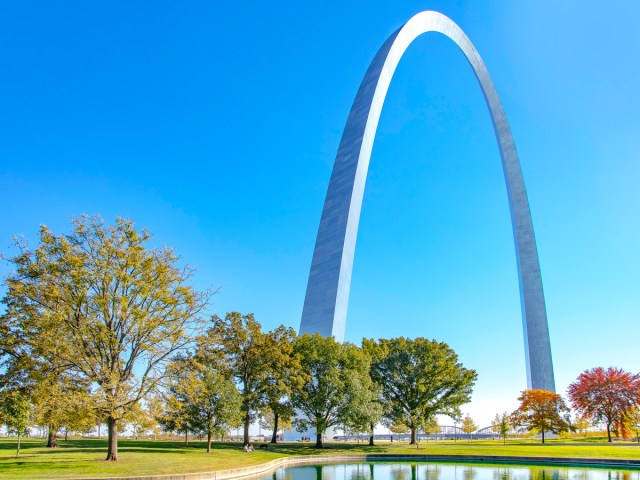
It’s one of the most famous buildings in the U.S., but did you know that the Gateway Arch is America’s tallest human-made monument? The arch, completed in 1965, soars over the St. Louis skyline in 886 tons of curving, gleaming stainless steel. And while the Gateway Arch has become an icon of the Missouri city, few realize it was intended as a commemoration of Thomas Jefferson’s 1803 Louisiana Purchase and America’s westward expansion in the 19th century. Master Finnish American Eero Saarinen, who is responsible for the design, modeled the arch’s shape on a catenary curve — a curve that emulates a flexible hanging chain or cable.
Today, millions visit the 100-acre Gateway Arch National Park each year, not only for the arch — which is both 630 feet tall and wide — but also for a host of other interesting exhibits, from the Museum of Westward Expansion (which focuses on fur trading and explorers including Lewis and Clark) to the the Old Courthouse, where Dred Scott sued for freedom from slavery. But clearly, the arch is the star of the show — especially the unique tram ride inside the arch, which offers unmatched views of the city and the winding Mississippi River below.
Sunsphere – Knoxville, Tennessee
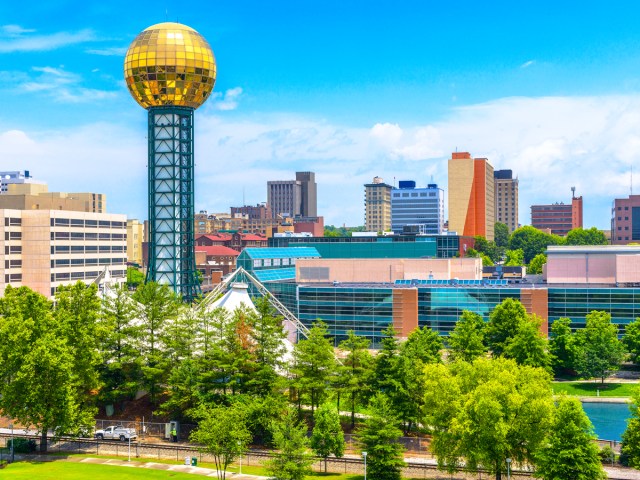
Constructed for the Knoxville International Energy Exposition (aka the 1982 world’s fair), the 26-story Sunsphere features a hexagonal steel tower topped by a striking golden orb. The 75-foot-wide circular structure is covered with 360 24-karat gold-infused panes, allowing it to brilliantly reflect the sun’s rays during the day and the city lights of Knoxville by night. The theme for the fair was “Energy Turns the World,” and Knoxville decided to showcase solar energy by making a replica of the sun.
After sitting vacant for many years, the Sunsphere opened its observation deck to the public in February 2022 — offering epic views of the Great Smoky Mountains, the Tennessee River, the University of Tennessee campus, and the original world’s fair site. The tower is part of a rare group of freestanding towers built specifically for world’s fairs and still standing today, along with Paris’ Eiffel Tower and Seattle’s Space Needle — and it offers a unique look at ingenuity from decades past.
More from our network
Daily Passport is part of Inbox Studio, which publishes content that uplifts, informs, and inspires.










